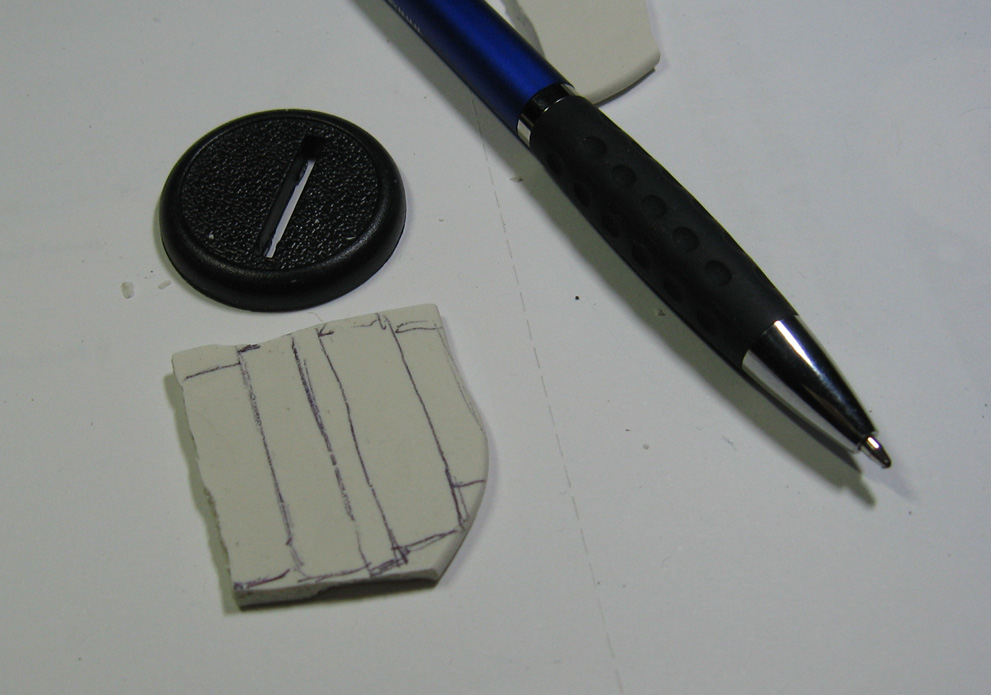As promised, the next episode in the pirate theme bases, showing the addition of the masts.
The first article showed all of the various sculpey pieces, including these rolled tubes. I try to have a nice selection of widths, so that I could also have broken yard arms in addition to the thicker masts.
Since these are being made for someone else who will be adding the figures later on, I had to guess at what might be put on a given base.
This is important, as I try to avoid having the broken mast be the same height as the figure. Shorter or taller than the figure is ideal, because two items of the same height in such a confined space is a poor composition.
You can't always avoid this, but it is not a bad rule of thumb to work with.
The broken section of the mast is carved away. I try to let the sculpey break in a natural way, creating its own pattern. It is best to have one part of the break be deeper than the rest, to show either a weak spot in the wood, or the interior wood grain.
To make things go a little quicker, I began with the wedge tool. In the past, I have only worked with the scoring tool of a narrower gouging tool, but I felt like I wanted a stronger texture on these masts.
After working my way around the mast with the wedge carver, I took out a flat carving tool, and did some broad shavings around the mast to tone down parts of the texture. This was much quicker that the scoring tool method... and you can see how much the texture was smoothed out.
I had some very thin plasticard on hand to create some metal rings on the mast. You could even use paper, but that sometimes tends to bend and kink rather than wrap smoothly.
Some super glue was applied to the area, and the strip was wrapped around it.
A second, thinner strip was added further up the mast to make it more interesting. You could hang wooden pegs from this, or even some rope coils if you really wanted to get fancy!
Once the masts are complete, it's time to glue those guys down!
The next episode will cover the quick addition of some gold coins, and some spikes on these metal strips that were added to the masts. Stay tuned!




























































